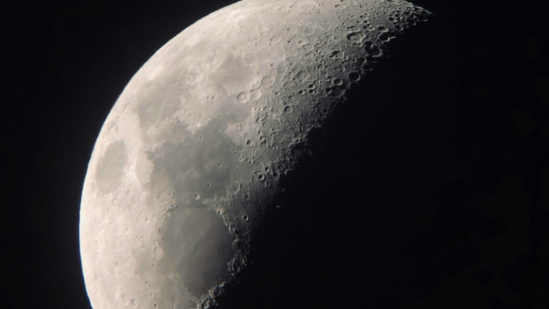Ultra-rare, world’s first Moon dust from China: UK lab begins analysing Chang’e 5 lunar sample, opening new chapter in Moon-Earth research collaboration
In a groundbreaking step toward global scientific cooperation, Indian-origin scientist Prof Mahesh Anand has become the first foreign researcher to receive a sample of lunar dust from China’s historic Chang’e 5 Moon mission, reported hindustantimes.com.
The lunar material, brought to Earth by China’s robotic Chang’e 5 lander in 2020, was collected from a geologically young area of the Moon and marks the first successful Moon sample return since the Soviet Luna mission in 1976. China returned the dust in a capsule that landed in Inner Mongolia, becoming a dominant player in the modern space race.
Last week, in a formal ceremony in Beijing, China handed over dust samples to seven international teams — including researchers from the UK, Japan, Russia, Pakistan, and the EU. Prof Anand, based at Open University in Milton Keynes, personally carried the sample back in his hand luggage under strict security protocols.
In his high-security UK lab, contamination control is paramount. “Even the smallest Earth particle could destroy the integrity of these extra-terrestrial grains,” Anand emphasized. The three tiny vials contain just 60 milligrams of dark grey lunar dust — but that’s more than enough to keep scientists engaged for years.
Technician Kay Knight will begin the process by delicately preparing the sample. “It’s an honour — but a nerve-wracking one,” she said, noting the limited quantity and irreplaceability of the material.
Collected from the Moon’s volcanic region Mons Rümker, the ultra-rare dust could unlock secrets of lunar origin and Earth’s early formation
Advanced equipment will then subject the particles to intense analysis. One machine, developed over decades, will heat the dust to 1400°C to release ancient gases. Another will strike grains with a laser to assess oxygen content — both techniques designed to shed light on the Moon’s evolution and the violent celestial collision theory of its birth.
China has since moved ahead with the Chang’e 6 mission, successfully collecting samples from the far side of the Moon in 2024 — a first in lunar exploration.
Prof Anand views the gesture as more than scientific. “This is about collaboration, continuity, and a shared mission to understand our cosmic origins,” he said. He also expressed hope that more countries will emulate this model of openness. “Apollo samples shaped our generation of lunar scientists. This is the next phase.”
While the dust’s monetary value remains undisclosed, experts suggest the cost of such missions runs into hundreds of millions of dollars, reflecting both their rarity and their vast scientific worth.




